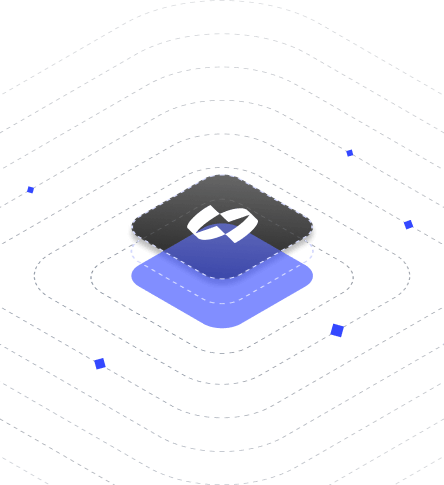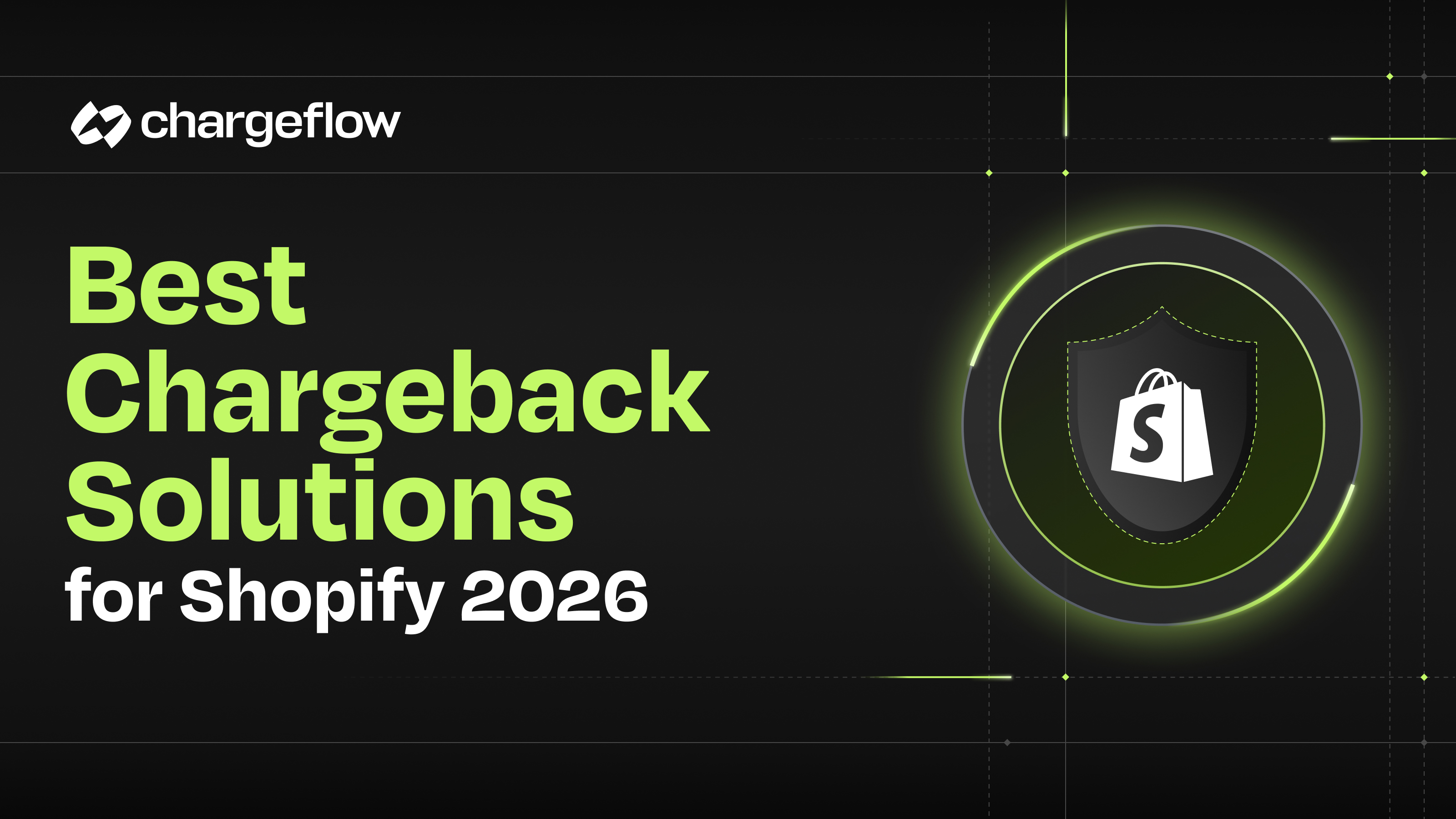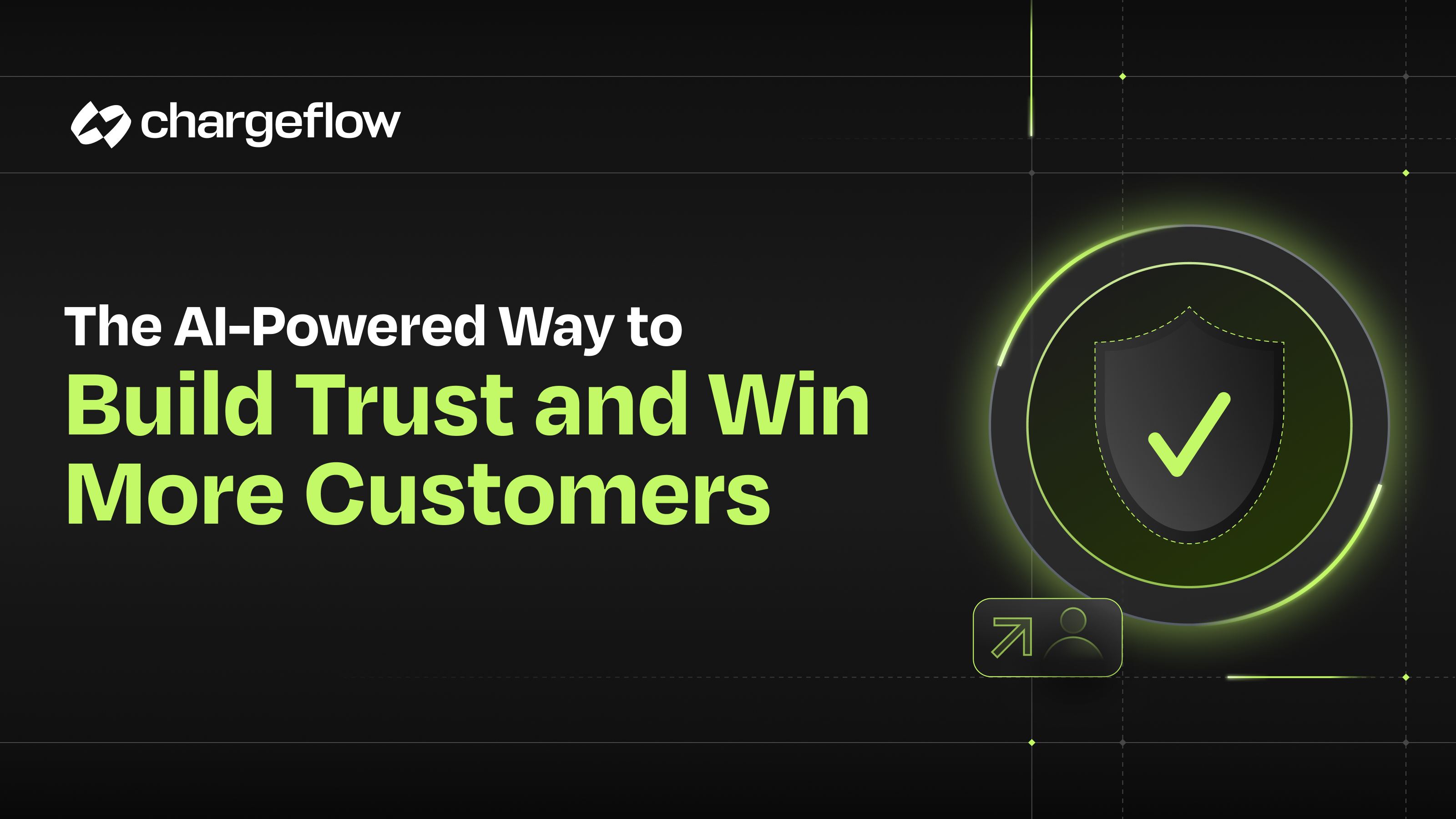7 Vital Metrics for eCommerce Success

Chargebacks?
No longer your problem.
Recover 4x more chargebacks and prevent up to 90% of incoming ones, powered by AI and a global network of 15,000 merchants.
Regardless of your vertical or business stage, these 7 metrics are vital for standing out from competitors. Ignore them and your business won't grow.
eCommerce success is all about tracking the right metrics.
If you ignore the essential variables that make up your business, you’ll be like a ship without a compass. That translates to missed opportunities, lost revenue, and eventual business failure.
So if your success (or the lack of it) hinges on you tracking vital metrics around your business, why doesn’t everyone do it?
Why isn’t it part of the everyday activities of every business owner?
The answer is simple. Pinpointing the variables that matter the most can be challenging, considering the quantum of data points you deal with as a business owner.
In this insightful piece, we'll review seven critical metrics that every business owner should care about for informed decisions and steady business success.
Here are the seven cardinal metrics we shall be reviewing:
- Conversion Rate
- Average Order Value
- Customer Acquisition Cost
- Customer Lifetime Value
- Cart Abandonment Rate
- WebTraffic Volume
- Chargeback Rate
Let’s jump right in!
Metric #1: Conversion Rate
Conversion rates refer to the percentage of website visitors that completed a pre-designed actions like making an order, filling a form, or signing up for a newsletter.
A high conversion rate shows your website effectively turns its visitors into customers. In contrast, a low conversion rate is a smokescreen of poor user experience, product offering, marketing strategies, or global economic challenges such as inflation and depression.
To gauge your conversion rate, divide the total number of purchases by the total number of website visitors and multiply the outcome by 100. For example, if 10,000 people visited your website in May and 2,000 of those placed an order or subscribed to your service, your conversion rate will be as follows:
2,000/10,000 x 100 = 20%.
The goal of every eCommerce merchant is to maintain a high conversion rate as it directly impacts the bottom line and long-term sustainability.

How to Improve Conversion Rates
The overall goal of every business is to make money. After all, you’re not in business to play around, are you? Pay attention to these factors to improve your conversion rate.
- Captivating Value Prop. Showcase the product or service's uniqueness and how it solves customers' pain points. Highlight what sets you apart from others.
- Airtight Call-to-Action (CTA). Use persuasive and well-placed CTAs to lead visitors into taking your designed actions. Make your CTAs stand out visually, use action-oriented words, and create a sense of urgency or exclusivity.
- Optimized Website Interface. If you’re the buyer, will you find the website visually appealing, easy to navigate, and quick to load? If not, optimize it and consider that many buyers now surf the web through mobile devices.
- Excellent Copywriting. Speak to one person, and you’ll speak to everyone. Speak to everyone, and you’ll reach no one. Also, avoid jargon or complex words. Use headings, subheadings, and bullet points to break up text to make it scannable. When using AI content creation tools, ensure they align with your brand's tone and messaging while enhancing readability and engagement. Explore more about key metrics for customer success that can shape your strategy and guide your improvements in user engagement and satisfaction
- User-Generated Content. Customer testimonials, case studies, client logos, trust badges, relevant awards, certifications, or affiliations go a long way to demonstrating credibility.
- Evergreen Content. In today’s AI-fueled infinite content world, loading your website with samey content might give you some SEO gains in the short term. But in the long run, businesses focusing on information gain, thought leadership, and creating new experiences will win big.
- Well-Thought-Out Conversion Process. Remove every restriction from the customer journey; use pre-filled information, guest checkouts, or enable social login options to minimize manual labor.
- Personalized Marketing. Suppose you’ve done proper market research and gone through the various steps in understanding your ideal customers. In that case, you should know how to target specific customer segments based on their preferences, behavior, or demographic information.
- Analytics and Data Analysis. Track and analyze user behavior and conversion funnels, and observe areas for improvement.
Experiment with different variations of your website, landing pages, CTAs, or other touchpoints for informed decisions on the impact of changes on conversion rates.

Metric #2: Average Order Value
Average order value (AOV) calculates the average value of each order placed on an eCommerce website in a specific period.
To measure AOV, you divide the total revenue by the number of successful orders recorded. For example, if you made $10,000 in revenue from 100 transactions in April, your AOV would be $100, which is $10,000/100.
AOV is essential because it helps you see customer behavior and purchasing patterns. By monitoring the AOV, you can see products that customers purchase, how much they are willing to spend, and outreach strategies for improved outcomes.
Again, your goal should be to improve your AOV constantly.
How to Improve Average Order Value
Implementing the seven vital tips below can help you increase your Average Order Value.
- Make them an offer they can’t resist. For example, you could use product bundling to encourage customers to purchase by combining related products and selling them for a little less than if customers bought them separately.
- Use minimum order amount for free shipping to persuade clients to make larger purchases. Business is like fishing; if you want to catch some fish, you’ve got to think like a fish.
- Use product recommendations to upsell the customer throughout the checkout process or on product sites.
- Encourage customers to buy more of a particular product by offering a discount when they purchase a certain quantity.
- Reward customers for making larger purchases or reaching certain milestones with discounts, points, or other incentives; it motivates them to spend more to earn rewards.
- Induce FOMO by offering time-sensitive promotions, discounts, or exclusive deals to encourage customers to buy more before the offer expires.
- Consider installment options so customers can spread out the cost of larger purchases over time, increasing their willingness to buy more at once.
- Some vendors add tipping at checkout points. You can do the same if your business model allows customers to tip.

Metric #3: Customer Acquisition Cost
Customer Acquisition Cost (CAC) measures how much you spend to bring in new customers. CAC comprises all sales and marketing-related costs, including advertising fees, commissions from sales, and other promotional expenses.
It’s a vital statistic since it enables your company to assess the cost and effectiveness of your sales and marketing initiatives in bringing in new clients.
To calculate your customer acquisition cost, add up every customer acquisition cost, including marketing and advertising expenses, salaries of salespeople and marketers, and any other costs related to lead generation and customer acquisition. And divide the outcome by the number of new customers acquired during the period.
i.e., if your total customer acquisition in Q1 2023 was $50,000, and you acquired 1,000 new customers during that same period, your CAC would be $50 per customer, which is $50,000 ÷ 1,000 = $50.
That said, it’s crucial to underscore that the stat isn’t always objective. For example, if you published a blog post today, a customer might read it and decide to make a transaction next month. And you might be left thinking the blog didn’t do quite well.

How to Improve Customer Acquisition Cost
There’s been a lot of discussion about how to quantify value for money regarding customer acquisition cost. However you look at the unfolding debate, there’s one objective and central argument for both sides of the aisle. Improving your CAC is a matter of understanding your business model and how much you’re willing to spend getting people to care about your value proposition.
Below are some recommendations:
- Target the right customer segment with accurate demographic data, and focus your efforts on the channels and platforms that work best for them. Billboard ads work for one business but not for another.
- If your website user experience does not meet modern eCommerce standards, you’ll only acquire visitors and lose them again – they’ll bounce off without taking the actions you desire.
- Use social media marketing for content distribution and brand building.
- Offer incentives like discounts, exclusive access, or loyalty points to incentivize existing customers to refer their friends and family to your business.
- While you must do all you can to generate leads, capturing and nurturing your leads is how you keep your prospects interested in your brand.
- Use blogs, videos, and social media to educate your audience and establish thought leadership by sharing your knowledge and skills.
The list above is by no means exhaustive. Try different approaches and work with the tools that give you better results.

Metric #4: Customer Lifetime Value
Customer Lifetime Value (CLV) measures the total estimated value a customer could bring to your business throughout the relationship. In other words, it is the projected revenue you aim to generate from a particular buyer during their entire time as your customer.
CLV is a popular business metric because it reveals the value of gaining and keeping consumers. It helps you track how much you’re willing to spend attracting new consumers and how much you can invest in keeping current ones.
Consequently, CLV is handy when making pricing, marketing, and customer service decisions. For example, if your customers have a high CLV, then investing more in customer service to ensure that those customers remain satisfied and loyal will be a priority.
There are different methods for calculating your customer lifetime value, but the most straightforward formula is multiplying Average Order Value by the Number of Repeat Purchases and Average Retention Time.
I.e., CLV = (Average Purchase Value) x (Average Purchase Frequency) x (Customer Lifespan)
Where:
- Average Purchase Value is the average amount of money a customer spends on each purchase.
- Average Purchase Frequency equates to the purchase frequency within a given period.
- Customer Lifespan equals the length of time a customer continues to engage with the business (.g., a year).
For example, if the average order value is $100, the number of repeat purchases per year is 5, and the average retention time is 2 years, the customer lifetime value would be: $100 x 5 x 2 = $1000

That means, on average, you expect customers to spend $1000 when they remain active and purchase from your business.
How to Improve Customer Lifetime Value
Improving your CLV ensures you can continually get maximum value from every customer relationship, resulting in higher customer retention and earnings.
Below are some essential recommendations for improving your CLV.
- Provide excellent customer service to ensure your existing customers can keep buying from you. Your current customers are the key to acquiring new customers.
- Cross-selling and upselling help you lead customers to purchase related or higher-priced items. Consider personalized product recommendations, bundle deals, and targeted email campaigns—and don't forget to add a DKIM record to ensure your emails are delivered securely.
- If your business offers subscription services, consider solving adjacent customer pain points or offering subscription boxes or exclusive memberships.
- Use post-purchase follow-up to ensure satisfaction and offer additional products or services that may interest customers.
By providing unique shopping experiences, focusing on your customer’s pain points, and improving your value proposition, you can keep your buyers returning and recommending your business to others.
Metric #5: Cart Abandonment Rate
Cart abandonment considers the percentage of website visitors who add items to their shopping carts but then leave before finishing their purchases.
Cart abandonment is a vital metric to track because it’s one of the most significant challenges eCommerce businesses face. According to the Baymard Institute, the average cart abandonment rate for e-commerce stores is around 69%.
The formula for calculating your cart abandonment rate is as follows:
Cart Abandonment Rate = {1 - (Number of Completed Purchases / Number of Carts Created)} x 100.
For instance, if you had 500 completed transactions out of 2,000 carts created in April:
Cart Abandonment Rate = {1 – (500 / 2,000)} x 100 = 75%.
Tracking cart abandonment rates helps you understand the effectiveness of your checkout process and the overall customer experience. A high incidence of cart abandonment indicates that customers need help with checkout, such as unexpected prices or a complex checkout process.
How to Reduce Cart Abandonment Rate
Use the tips below to ensure customer satisfaction and a seamless checkout process.
- Remove unnecessary steps in your checkout process and make it as simple and user-friendly as possible, with minimal distractions.
- Some buyers wouldn't like to create an account or log in, so offer the option of guest checkout to make it easier for them.
- Limit form fields required during checkout to essential data points to minimize the time and effort needed from the customer.
- Displaying trust badges like security seals, customer reviews, and payment logos helps reassure customers of data security. That'll boost their confidence to buy.
- Make it easy for customers to pay how they want by offering multiple payment options.
- Consider offering free shipping or setting a minimum order amount for free shipping, as shipping costs are a common reason for cart abandonment.
- Use automated follow-up emails to remind customers who abandon their cart of the items they left behind and offer incentives such as a discount or free shipping to incentivize them to complete their purchases.
- Provide live chat support to help customers with questions or concerns during checkout.
- Ensure your website and checkout process are optimized for mobile devices, as many buyers shop on smartphones.
Continuously testing and optimizing your checkout process to identify areas for improvement and increase conversions helps you ensure your buyer stays on track with the transaction roadmap.

Metric #6: Website Traffic
Website traffic measures the number of visitors or users that access a website within a given period. This metric counts the popularity and performance of a website, and it’s essential for determining the success of an online business.
Tracking the website traffic is crucial for trend analysis. Knowing how many people have visited the website, the traffic source, and which pages they have looked at helps you better identify your target market and tailor your marketing strategies accordingly. It helps track improvement areas like content, design, and user experience.
Marketing automation CRM shows you various aspects of visitor behavior, such as page views, clicks, downloads, and form submissions.
You can also set up Adobe Analytics, Google Analytics, and SEMrush to track the number of website visits, sessions, page views, unique visitors, bounce rate, and other vital metrics.
To measure website traffic using Google Analytics, follow these steps:
- Sign in to your Google Analytics account.
- Click on the "Reporting" tab at the top of the page.
- Click "Audience" and "Overview" in the left-hand sidebar to see the number of sessions and users.
- To view pageviews, click "Behavior" and "Overview."
- To know the bounce rate, click on "Behavior," then "Site Content," and then "All Pages."
Note: Google has stated that effective July 1, 2023, standard Universal Analytics properties will no longer process data. You'll be able to see your Universal Analytics reports for a period of time after July 1, 2023. However, new data will only flow into Google Analytics 4 (GA4) properties.
How to Improve Your Website Traffic
Use the best practices below to drive more traffic to your website.
- Make your website search engine-friendly with relevant phrases, quality content, and seamless navigation. We’re getting close to the point of “search singularity.” That is, the point of extreme copycat content when the search results become overwhelmed with lookalike blog posts and duplicative content, thanks to generative AI. Hence, search engines like Google prioritize websites with more original thoughts than ever.
- If you’re focusing on content creation without creating distribution channels, you’re leaving money on the table. Take advantage of social media to promote and increase traffic to your website.
- Leverage email marketing to promote your website and drive traffic with cold email software.
- Collaborate with reliable influencers to expand your audience and increase traffic to your website.
- Guest posting on other category-leading websites is also a fantastic method to expand your audience and increase traffic to your platform. Locate blogs that allow guest posts in your niche, and then submit well-written articles with a link to your website.
- Run paid advertising campaigns on platforms like Facebook and Google Ads.
The caveat is that more than one method yields the complete result. The goal is to try different ways, track the outcome, and improve your strategies accordingly.

Metric #7: Chargeback Rate
Chargeback ratio, also called chargeback-to-transaction ratio or chargeback rate, is a metric that measures your total sales against the number of chargebacks you received in a given period.
Understanding your chargeback ratio is crucial because it can significantly impact your business. Your business is considered a "high-risk business," and you'll be placed in a chargeback monitoring program to address any issues.
Participating in this program means you will be charged excessive fees for every transaction and may face penalties for every period your chargebacks remain above acceptable standards.
For example, Mastercard's Excessive Chargeback Program requires monthly reports from acquiring banks with listed merchants and charges between $50 and $300 per report. Failure to submit a report can result in penalties of up to $1,000 per report.
Although the card networks use different unique methods for determining a vendor’s chargeback rate, the formula is the same across all networks. You calculate your chargeback ratio and divide the total chargebacks received in a given period by the number of credit card transactions in the same period.
i.e., Total chargeback per month/total transactions per month x100 = chargeback rate. For example, say you had 50 chargebacks out of 2,000 transactions in April:
Chargeback Rate = (50 / 2,000) x 100 = 2.5%.

How to Improve Your Chargeback Rate
Every chargeback means potential lights-out for your business due to regulatory and revenue hiccups. Put these recommended measures in place to reduce your chargeback ratio:
- Eliminate chargeback-producing business practices and clerical missteps.
- Obtain authorization before processing payments to reduce unauthorized transactions.
- Limit fraud exposure with detection tools like 3D Secure, Address Verification Service, Geolocation, etc.
- Scrutinize transaction details for potential fraud red flags.
- Show your contact information and policies where customers can find them, and be responsive to customer inquiries.
- Eliminate doubts with explicit billing descriptors showing your contact information.
- Ensure your ads and product descriptions aren’t letting you down.
- Pay attention to your shipping processes, communicate any delays, and always obtain delivery confirmation.
- Issue refunds as soon as possible so there’s no room for doubts or second-guessing.
- Use chargeback automation to fend off criminals and stay on top of your chargeback situation.
Conclusion. Regardless of your vertical or business stage, these 7 metrics—conversion rate, average order value, customer acquisition cost, customer lifetime value, cart abandonment, website traffic, and chargeback rate—are vital for standing out from your competitors, carving out a lucrative niche in the crowded digital landscape, and future-proofing your business.

Chargebacks?
No longer your problem.
Recover 4x more chargebacks and prevent up to 90% of incoming ones, powered by AI and a global network of 15,000 merchants.






























.png)








